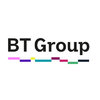Filter interviews by
ACT Fibernet Installation & Service Engineer Interview Questions and Answers
6 Interview questions
VFL is used to visually locate faults or breaks in fiber optic cables.
Connect the VFL to one end of the fiber optic cable
Activate the VFL and look for any visible light leakage along the cable
Move the VFL along the cable to locate the exact position of the fault
Use the VFL to verify continuity of fiber optic cables
VFLs are commonly used in conjunction with OTDRs for fiber optic testing
OTDR is used to test the quality of fiber optic cables by sending a light pulse and measuring the reflected signal.
Connect the OTDR to the fiber optic cable being tested
Set the OTDR parameters such as wavelength and pulse width
Send a light pulse through the cable and measure the reflected signal
Analyze the data to determine the quality of the cable and locate any faults or breaks
Repeat the process at different poi...
FTTX refers to the design and construction of fiber optic networks that extend from a central office to individual homes or businesses.
FTTX stands for Fiber to the X, where X can be home, business, curb, etc.
FTTX networks use fiber optic cables to transmit data, voice, and video signals.
FTTX networks can be designed in various architectures such as point-to-point, point-to-multipoint, and passive optical networks ...
A good splicer should have knowledge of different types of fibers, be able to identify and troubleshoot issues, and have a high level of accuracy.
Knowledge of different types of fibers
Ability to identify and troubleshoot issues
High level of accuracy
Proper use of splicing equipment
Understanding of industry standards and best practices
FTTX refers to the deployment of fiber optic cables to provide high-speed internet and other communication services to homes and businesses.
FTTX stands for Fiber to the X, where X can be home, building, curb, node, etc.
FTTX networks use fiber optic cables to transmit data, providing faster and more reliable internet and communication services.
FTTX can include various technologies such as FTTH (Fiber to the Home), ...
The question is incomplete. Please provide more information.
Please provide more information about what color code is being referred to.
Examples could include electrical wiring color codes or color codes for different types of gases.
Without more context, it is impossible to provide a specific answer.
ACT Fibernet Installation & Service Engineer Interview Experiences
1 interview found
Interview Questionnaire
9 Questions
- Q1. Learning & grothing
- Q2. Scope of fttx
- Ans.
FTTX refers to the deployment of fiber optic cables to provide high-speed internet and other communication services to homes and businesses.
FTTX stands for Fiber to the X, where X can be home, building, curb, node, etc.
FTTX networks use fiber optic cables to transmit data, providing faster and more reliable internet and communication services.
FTTX can include various technologies such as FTTH (Fiber to the Home), FTTB ...
- Q3. How to succeed career
- Q4. Act provide only fiber net
- Q5. Disgin and construction of fttx
- Ans.
FTTX refers to the design and construction of fiber optic networks that extend from a central office to individual homes or businesses.
FTTX stands for Fiber to the X, where X can be home, business, curb, etc.
FTTX networks use fiber optic cables to transmit data, voice, and video signals.
FTTX networks can be designed in various architectures such as point-to-point, point-to-multipoint, and passive optical networks (PON)...
- Q6. How to use otdr
- Ans.
OTDR is used to test the quality of fiber optic cables by sending a light pulse and measuring the reflected signal.
Connect the OTDR to the fiber optic cable being tested
Set the OTDR parameters such as wavelength and pulse width
Send a light pulse through the cable and measure the reflected signal
Analyze the data to determine the quality of the cable and locate any faults or breaks
Repeat the process at different points a...
- Q7. How to use vfl
- Ans.
VFL is used to visually locate faults or breaks in fiber optic cables.
Connect the VFL to one end of the fiber optic cable
Activate the VFL and look for any visible light leakage along the cable
Move the VFL along the cable to locate the exact position of the fault
Use the VFL to verify continuity of fiber optic cables
VFLs are commonly used in conjunction with OTDRs for fiber optic testing
- Q8. How to check we r a good splicer
- Ans.
A good splicer should have knowledge of different types of fibers, be able to identify and troubleshoot issues, and have a high level of accuracy.
Knowledge of different types of fibers
Ability to identify and troubleshoot issues
High level of accuracy
Proper use of splicing equipment
Understanding of industry standards and best practices
- Q9. Color code of
- Ans.
The question is incomplete. Please provide more information.
Please provide more information about what color code is being referred to.
Examples could include electrical wiring color codes or color codes for different types of gases.
Without more context, it is impossible to provide a specific answer.
Interview Preparation Tips
Skills evaluated in this interview
Top trending discussions






Interview questions from similar companies

Installation & Service Engineer Interview Questions & Answers
Bharti Airtelposted on 20 Mar 2024
I applied via Referral and was interviewed before Mar 2023. There was 1 interview round.
(1 Question)
- Q1. How can we join optical fibre cable.
- Ans.
Optical fibre cables can be joined using fusion splicing or mechanical splicing techniques.
Fusion splicing involves melting the ends of two optical fibre cables together using an electric arc or laser.
Mechanical splicing uses alignment fixtures to join the cables together without melting.
Properly cleaning and preparing the fibre ends is crucial for a successful splice.
Splice loss should be minimized to ensure efficient...
Interview Preparation Tips

I applied via Referral and was interviewed before Aug 2020. There was 1 interview round.
Interview Questionnaire
1 Question
- Q1. My profile was related to SAP finance and data migration. So the questions regarding same area were asked
Interview Preparation Tips

I applied via Other and was interviewed before Mar 2018. There were 3 interview rounds.
Interview Questionnaire
4 Questions
- Q1. Serivece expression plz told
- Ans.
Service expression refers to the way services are communicated and perceived by customers.
Service expression includes verbal and non-verbal communication.
Example: A friendly greeting at a restaurant enhances customer experience.
It involves understanding customer needs and responding appropriately.
Example: A customer service representative actively listening to a complaint.
- Q2. Customer choice given service and reply best response
- Q3. How much transfer customer
- Ans.
The question is unclear and lacks context.
Request clarification on what is meant by 'transfer customer'
Ask for more information about the specific role and responsibilities of an Assistant Manager
Seek clarification on the purpose or objective behind the question
- Q4. 6000/ customer satisfaction guaranteed service
Interview Preparation Tips
Skills: Communication

I applied via Naukri.com and was interviewed in Dec 2019. There were 3 interview rounds.
Interview Questionnaire
1 Question
- Q1. Question about in depth working of Angular.io and nodejs. Also the basic mongodb questions.
Interview Preparation Tips
There will be 3 technical rounds as to say and a HR round.
First round of interview is taken by the junior developer. This will be pure technical and lots of questions related to mostly one tech. Either front end and backend. Easy to clear if the basics are clear.
Second round is more technical and mostly related to integration of different services and architectural styles etc. Not so difficult to clear if you know industry best practices for designs.
Third round is with manager who checks the candidates and explains the business need and his role. Not to worry about.
Last is an HR round for package discuss and stuff.

I applied via Walk-in and was interviewed before Nov 2020. There were 3 interview rounds.
Interview Questionnaire
1 Question
- Q1. What is the sorce of a company growth
- Ans.
The source of a company's growth can be attributed to various factors such as innovation, market demand, strategic partnerships, and effective management.
Innovation: Developing new products or services that meet the needs of customers
Market demand: Identifying and meeting the needs of a growing market
Strategic partnerships: Collaborating with other companies to expand reach and capabilities
Effective management: Efficie...
Interview Preparation Tips

I applied via Walk-in and was interviewed before Dec 2020. There were 3 interview rounds.
Interview Questionnaire
2 Questions
- Q1. WHAT IS DNS ?
- Q2. Wi fi ranges ? And how many channels are there
- Ans.
Wi-Fi ranges and number of channels explained.
Wi-Fi ranges depend on the frequency band used, with 2.4 GHz having a longer range than 5 GHz.
The number of channels available depends on the frequency band and channel width.
2.4 GHz has 14 channels, while 5 GHz has more channels but with stricter regulations.
Channel width can also affect the number of available channels and Wi-Fi performance.
Interview Preparation Tips
Skills evaluated in this interview

I applied via Referral and was interviewed before Feb 2021. There was 1 interview round.
(1 Question)
- Q1. Tell me about yourself ? 2. What is IP Address ? 3. How do you manage the work force in your current assignment?
Interview Preparation Tips

Interview Questionnaire
1 Question
- Q1. Only about previous job IoT / M2M Journey.

I applied via LinkedIn and was interviewed in Nov 2020. There was 1 interview round.
Interview Questionnaire
2 Questions
- Q1. I was asked about my past experience, some question related to accounts payable.
- Q2. Wat is P2P, some question related to journal entry.
Interview Preparation Tips
ACT Fibernet Interview FAQs
Tell us how to improve this page.
ACT Fibernet Interviews By Designations
- ACT Fibernet Network Engineer Interview Questions
- ACT Fibernet Management Trainee Interview Questions
- ACT Fibernet Senior Executive Interview Questions
- ACT Fibernet NOC Engineer Interview Questions
- ACT Fibernet Senior Network Engineer Interview Questions
- ACT Fibernet Team Lead Interview Questions
- ACT Fibernet Sales Executive Interview Questions
- ACT Fibernet Senior Sales Executive Interview Questions
- Show more
Interview Questions from Similar Companies
ACT Fibernet Installation & Service Engineer Reviews and Ratings
based on 1 review
Rating in categories
|
Network Engineer
1.2k
salaries
| ₹1.5 L/yr - ₹5.8 L/yr |
|
Senior Network Engineer
581
salaries
| ₹2.5 L/yr - ₹6 L/yr |
|
Team Lead
319
salaries
| ₹3 L/yr - ₹8.5 L/yr |
|
Senior Executive
276
salaries
| ₹2 L/yr - ₹6 L/yr |
|
Sales Executive
227
salaries
| ₹2 L/yr - ₹4.7 L/yr |

Vodafone Idea

Bharti Airtel

Ericsson

Tata Communications
- Home >
- Interviews >
- ACT Fibernet Interview Questions














